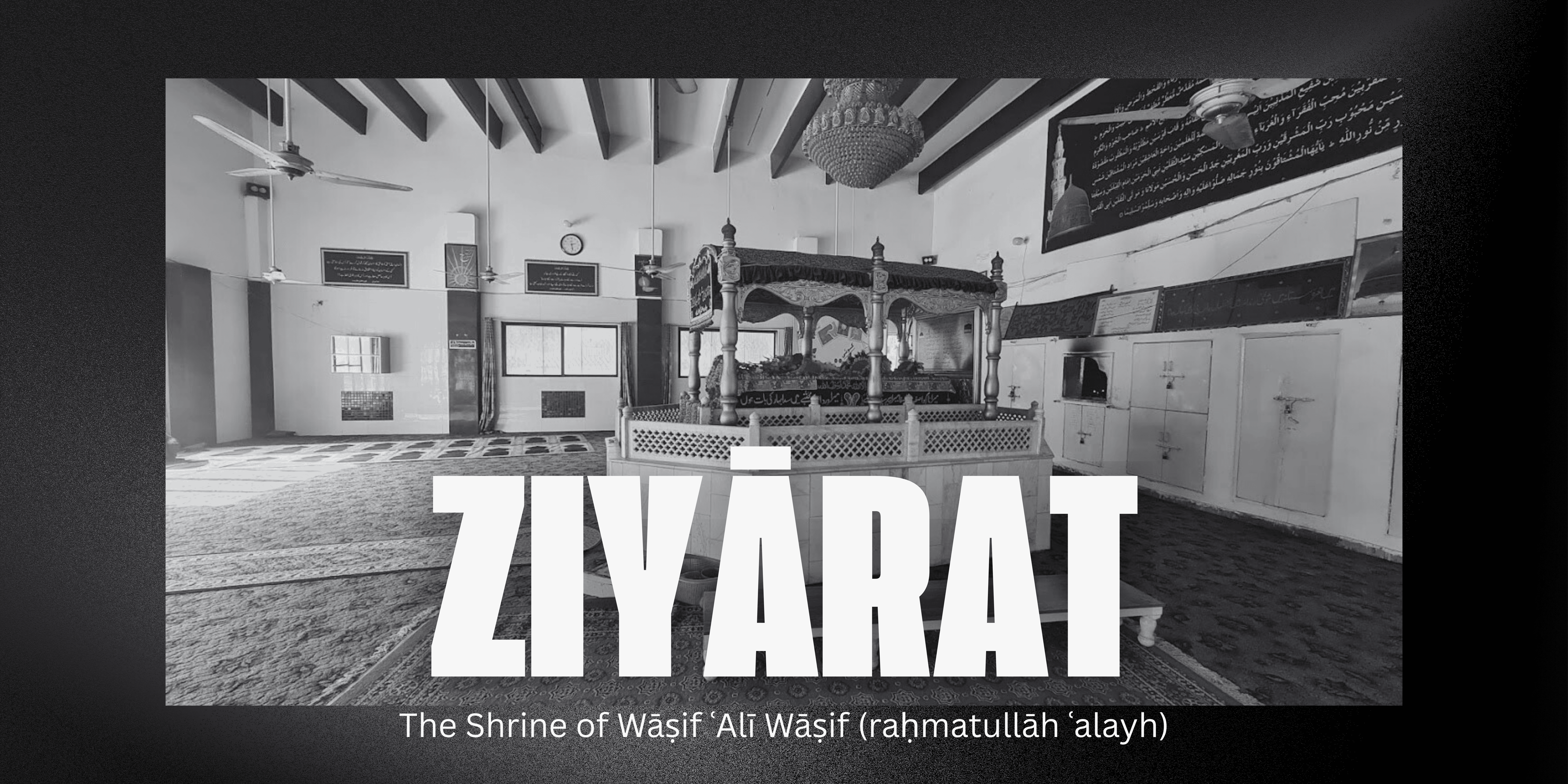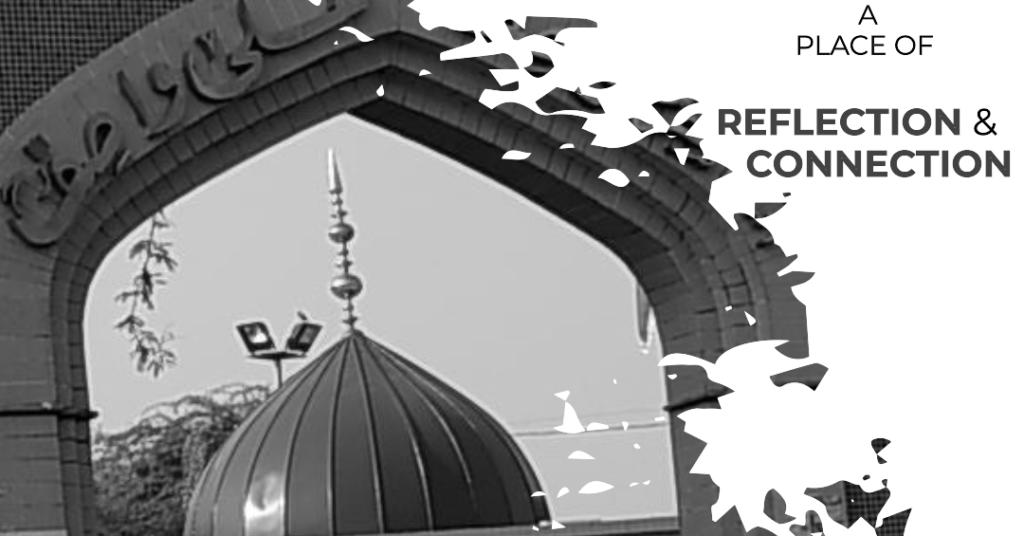
Imām al-Zamān, the Qutb al-Irshād, Sayyidinā Wāṣif, would spread the luminous light of ‘ilm and ma’rifah around him. Despondent, sorrowful, troubled, and in a state of distress, seekers would come to him, and when they departed, they would be enriched with joy and ṭumānīnah. Although their circumstances might not seem to change after just one meeting, within that same state, a powerful thought would begin to arise within them. This thought would illuminate their dark hearts, filling them with contentment and happiness as they journeyed forth, for they had found a steadfast support of hope.
Such individuals would come to realize that they had arrived at a sanctuary where the secrets of their hearts would be heard and understood without the need for verbal expression. Not only would their inner struggles be felt, but their confusion would also find resolution. They would emerge from a state of anxiety and despair into a world brimming with hope. From hope, they would then ascend into the realm of certainty, where the journey along the sīrat of Allāh becomes remarkably easy for those imbued with conviction. Sakīnah stands before them with folded hands, yet they continue their journey without yearning for anything.
In a short span of time, these individuals would begin to radiate peace for others, spreading love and ṭumānīnah among all. Hundreds of such souls would visit him, gaining illumination, and then transmit that radiant light to others. Until the destined hour arrived when he departed from this earthly realm on 24 Rajab 1413 AH, around three o’clock in the afternoon. Every year, his lovers gather in large numbers at his blessed shrine for the annual ‘Urs gathering. When the gentle rains of Rajab arrive, preparations commence; the shrine’s coverings are lovingly arranged, charts, posters, and banners of his teachings are prepared with reverence. The Alhamra Hall is reserved for enlightening seminars, and arrangements for communal meals begin with great joy. The beautification of the shrine is undertaken with dedication, day and night, a testament to the love and devotion of his followers.

The Shrine: A Place of Reflection and Connection
Many people longed to know more about Wasif Ṣāḥib during his lifetime, yet few had the courage to ask personal questions or delve deeper into his life. When sitting in his company, people often found themselves overwhelmed by the humility and spiritual aura that surrounded him. It wasn’t due to any imposed restrictions—Wasif Ṣāḥib welcomed everyone—but his presence naturally inspired a respectful silence. Visitors would often come to seek solutions to their own problems, yet those who truly loved him, those who visited regularly, left their personal concerns behind. Their only wish was to listen to his words and sit in peaceful silence, absorbing his wisdom.
At the shrine of Wasif Ṣāḥib, this tradition continues. People visit not just to pay respects but to experience the tranquility and the teachings that his resting place embodies. His shrine offers solace for troubled hearts and a connection to the vast spiritual legacy he left behind. Just as during his lifetime, many seek guidance, while others come to reflect on the deeper truths he shared.

Humility in Life, Grandeur in Legacy
Wasif Ṣāḥib rarely spoke about himself, yet the glimpses he shared with those close to him reveal a life deeply rooted in education, spirituality, and humility.
Wasif Ṣāḥib was born in Khushāb, where he received his early education. Later, he moved to Jhang to live with his maternal grandfather and attended Government College Jhang. His life was deeply intertwined with education, both as a student and a teacher, which shaped much of his personality and philosophy. He expressed his reverence for teachers in a letter to ʿAbd al-Raʾūf:
“I have a deep love for teachers, perhaps because I too lived the life of a teacher. In this world, everything is attainable, but what we lack are people who are both sincere and intelligent. These two qualities are essential for a good teacher.”
His legacy as an educator is felt at the shrine, where visitors reflect on his profound teachings and the sincerity that marked his life. His letters, particularly those published in Gumnām Adīb (Gumnaam Adeeb: Letters to Wāṣif Ali Wāṣif), offer rare insights into his personal and spiritual journey. These letters continue to serve as windows into his thoughts, connecting the visitor to Wasif Ṣāḥib’s inner world.
One of the questions people often asked Wasif Ṣāḥib was whether he was a native of Lahore. He responded to this in a letter to ʿAtāʾ Jāvīd, where he wrote:
“We pray for you, and please pray for us in return. Perhaps, if I pass through Sargodha, we may meet. You see, I occasionally visit Khushāb because that is our ancestral home.”
In another letter to Sheikh Nisār Aḥmad, he reflected on his roots and connections, writing:
“Are you originally from Makhyāna, or did your family settle there from somewhere else? I ask because I have a deep connection with Makhyāna. Many of my veiled friends were from there, like the late Yūsuf Ḥasan, Gulzār Bhatī, and Sheikh Iftikhār Aḥmad.”
Visitors to his shrine are often reminded of the humility with which Wasif Ṣāḥib lived his life. In a letter to Khushī Muḥammad, he wrote nostalgically:
“You reminded me of Lahore English College. What an era that was! With memories of that time, I’m reminded of my own days as well.”
Once, when someone asked him about his profession, he replied with characteristic grace:
“By the grace of Allāh, I have been blessed with honor. His decree is that He bestows honor upon whomever He wills. As for my profession, how much did you pay for my two books? This is a great business—honor for honor, and business for business. Five of my books have been published, and perhaps over fifty more will be published.”
His response encapsulates his view of life—humble, yet filled with profound meaning.
The beauty of Wasif Ṣāḥib’s teachings lies in their universal appeal. People often wondered about Wasif Ṣāḥib’s religious inclinations, as his gatherings were attended by Sunnīs, Shīʿas, and Ahl-e-Ḥadīth alike. He made it clear in both his gatherings and his writings that “sects belong to Islām, but Islām does not belong to sects.” He frequently reminded his followers:
“Do not divide the Ummah, for this displeases the Prophet ṣallallāhu ʿalayhi wa-ʾālihī wa-sallam.”
At his shrine, this message of unity continues to resonate. People from various backgrounds visit to seek spiritual guidance, united by a common longing for deeper understanding. Wasif Ṣāḥib himself wrote about his spiritual connections in a letter to Ṣūfī Muḥammad Yūsuf:
“I am a Sunnī by belief, a servant of the Auliyāʾ kirām. I have received kindness from the Chishtī, Qādrī, Naqshbandī, Suhrawardī, and Ṣābrī saints.”
His words reflect the breadth of his spiritual journey, which transcended sectarian boundaries. Visitors to the shrine can feel this sense of inclusivity and connection. The site becomes not just a place of ziyārat but a bridge between the various spiritual orders and the seekers who come from all walks of life.

A Place of Universal Spirituality
Insights from His Writings
As mentioned earlier, during his lifetime, Wasif Ṣāḥib was reluctant to speak about his own life. However, in his letters and writings, he occasionally shared personal reflections that offer visitors a deeper understanding of the man behind the teachings. For instance, in one letter, he responded to someone asking about his biography, saying:
“It is being compiled and will soon be published.”
This statement reflected both his humility and his subtle acknowledgment of the growing need for people to learn about his life and wisdom. Even in such modest remarks, there is a powerful call for introspection and self-reflection.
This connection endures at his shrine, where visitors come seeking wisdom, comfort, and a deeper understanding of life.
To those curious about his religious inclinations or seeking guidance, his shrine continues to serve as a place of spiritual learning and unity. His writings serve as an enduring connection for seekers even today. As he once wrote:
“My column is a reflection of me, meeting with you every week.”
For those who come to pay their respects, Wasif Ṣāḥib’s shrine offers a serene and reflective atmosphere. Visitors often experience:
- A Spiritual Retreat: The shrine is a place to leave behind worldly concerns, just as his closest followers did in his lifetime. It provides an opportunity to connect with the inner self, free from distractions.
- Unity Beyond Divisions: Just as his gatherings welcomed people from diverse backgrounds, so does his shrine. It stands as a symbol of unity and inclusivity, where all who seek solace and wisdom are welcomed.
- A Glimpse into His Legacy: The tranquility of the shrine, combined with the power of his words and teachings, offers visitors a chance to reflect on Wasif Ṣāḥib’s life—a life devoted to knowledge, service, and the pursuit of spiritual truth.
Visiting the shrine is not merely an act of ziyārat; it is a step into the profound world of Wasif Ṣāḥib’s teachings. Each visit becomes a moment of reflection, connection, and transformation.

Visiting the Shrine: What to Expect
Practical Information for Visitors
Located in 25 Bahawalpur Rd, Islamia Park, Lahore, the shrine (Darbar Ḥadrat Wāṣif ʿAlī Wāṣif) is open year-round for visitors. Special commemorative events are held to honor Wasif Ṣāḥib’s life, offering a deeper engagement with his legacy.